From the facial expressions and not-so-faint yelps during my soft tissue and stretch sessions, it’s safe to say my work isn’t exactly relaxing. When multiple people joke about needing a bite stick to survive a stretch, I know I’m in deep. But despite the discomfort, golfers have been flooding my schedule, begging for a spot on the stretch table to fix their stiff backs, locked-up hips, and disappearing swing speed.
Here’s the kicker: they could avoid that pain (and my elbow in their glute) by tweaking just two things – movement and hydration.
While the rest of the country is enjoying a cool-down, September in DFW is still a full-swing scorcher. And this summer has been extra spicy thanks to added rain and humidity. When the air is already loaded with moisture, your body’s natural cooling system – sweat evaporating off your skin – breaks down. Instead of cooling you off, the sweat just sits there, making you hotter and stripping your body of even more critical fluids it needs to lubricate your joints, hydrate your fascia, and keep your brain firing.
What Is Fascia and Why It Matters for Golf?
Fascia is that stretchy web of connective tissue wrapped around every muscle, tendon, bone, and organ. It’s the glue holding you together, and when it’s healthy, it slides, glides, and springs you through your swing like a well-oiled machine.
But when you’re dehydrated? Fascia gets dry, sticky, and stiff. It won’t let your joints move freely. Your rotation suffers. Your power drops. You feel like the Tin Man without his can of oil, trying to bomb a drive. Not ideal.
What Dehydration Actually Does to You
If you’re waiting until you’re thirsty on the course, you’re already behind. Dehydration doesn’t just make you sweaty and cranky. It wrecks your:
Brain: brain fog, poor focus, headaches, mood swings
Body: stiff joints, muscle cramps, fatigue, dizziness (it also ages your skin, and let’s not act like we’re not trying to look good out there rolling around in a cart in our new golf drip)
Game: slower reaction time, weaker golf swings, poor decision-making
And if you let it go too far? Heat stroke.
Just a 2% drop in hydration is enough to hit “chronic” status, which means it isn’t just a one-off thing. You’re operating in the red zone day after day, and it’s tanking your performance and recovery.
Be Proactive and Execute a Hydration Plan (Spoiler – Drinking water alone, isn’t the answer)
Don’t get me wrong, drinking water is good. But just water isn’t enough. Your body needs to transform that water into a gel-like (think the sliminess of cucumber seeds), nutrient rich (calcium, chloride, magnesium, potassium, and sodium), substance to absorb it into your cells. The vacuole inside fruits and vegetables has the perfect consistency to be easily absorbed by our fascia making it a critical part of daily consumption. So, one glass of water and an apple is up to 20% more hydrating than two glasses of water.
Pro Tip: Start Your Day Hydrating
Bad news: You wake up dehydrated. All night, your body’s been clocked into overtime, repairing tissue, metabolizing, detoxing, regulating temperature. So, when that alarm goes off? Your cells are begging for a refill.
Before you even think about your backswing, do not pass go, do not collect $200, DO tee up your day with this cocktail:
Here’s my go-to morning hydration punch that I drink before anything else: 4 oz coconut water, 4 oz regular water, 1 tbsp chia seeds, 1 tbsp local honey, 1 tsp lemon juice.
Let it sit for 5–10 minutes until the chia thickens up. Bonus round: toss a pinch of Celtic salt under your tongue and let it dissolve before sipping. That salt acts like a hydration Uber, driving water directly into your cells and kickstarting your fascia for the day.
It’s like a clean Gatorade, without the neon dye, chemicals, or the crash. Just clean, effective hydration.
Movement = Hydration Activation. Even if you’re drinking smart, hydration doesn’t get into your tissues unless you move. Think of movement as the pump that distributes the fluids where they’re needed most.
Here are some fascia-friendly, golf-specific drills that help hydrate you from the inside out:
Decline Bench Sit-Up with Overhead Press and Rotation – Lights up the core, challenges rotation, and hydrates fascia through spinal flexion + extension

Hip Shift with or without Overhead Reach on a Bosu ( or with a GolfForever band) – Improves thoracic rotation and hip mobility and balance simultaneously
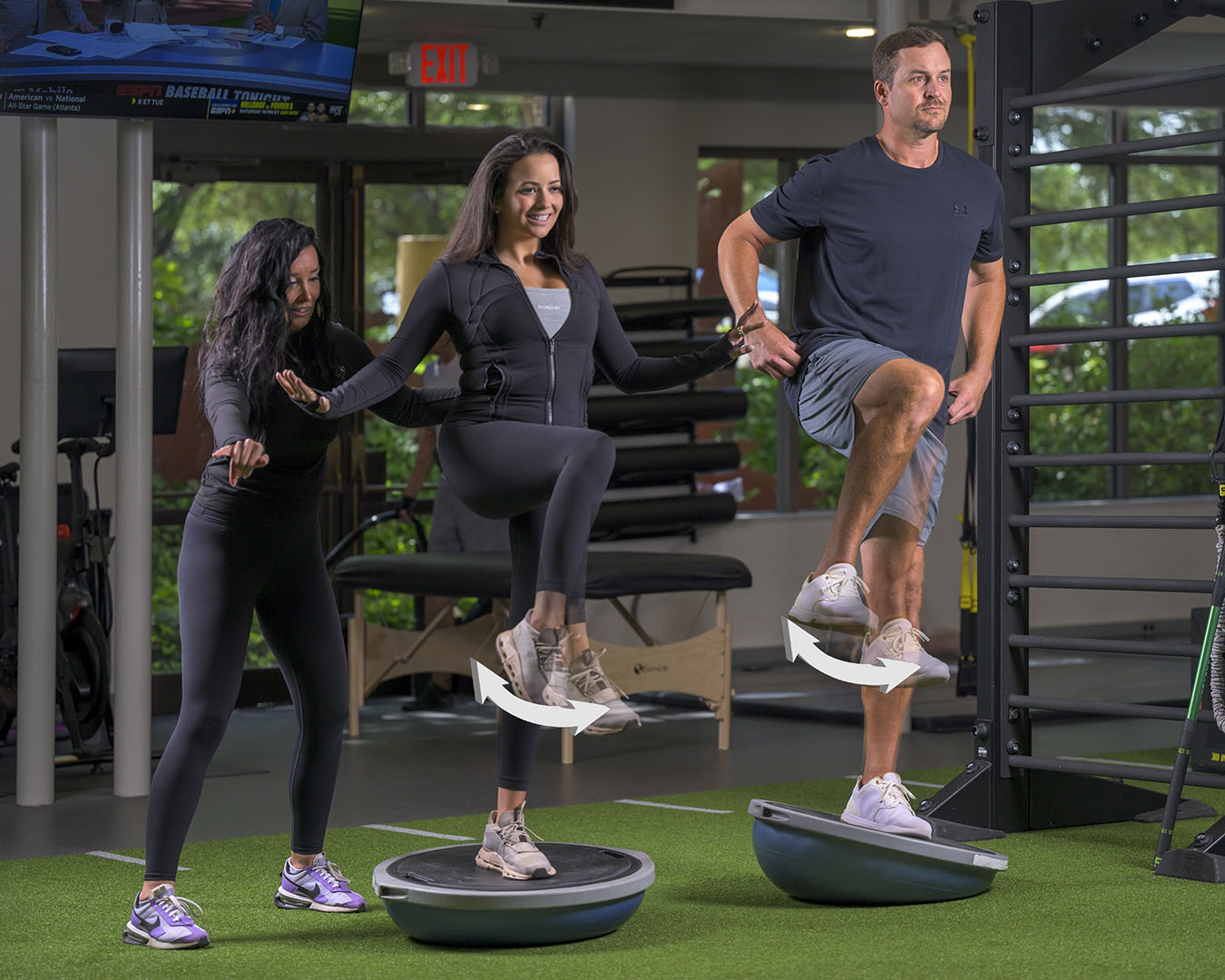
Heroboard Lateral Slides – Strengthens glute medius and builds stability in the frontal plane
Supine Hip Rotation with Core Activation – Unlocks hips while syncing the core, promoting smoother rotational movement
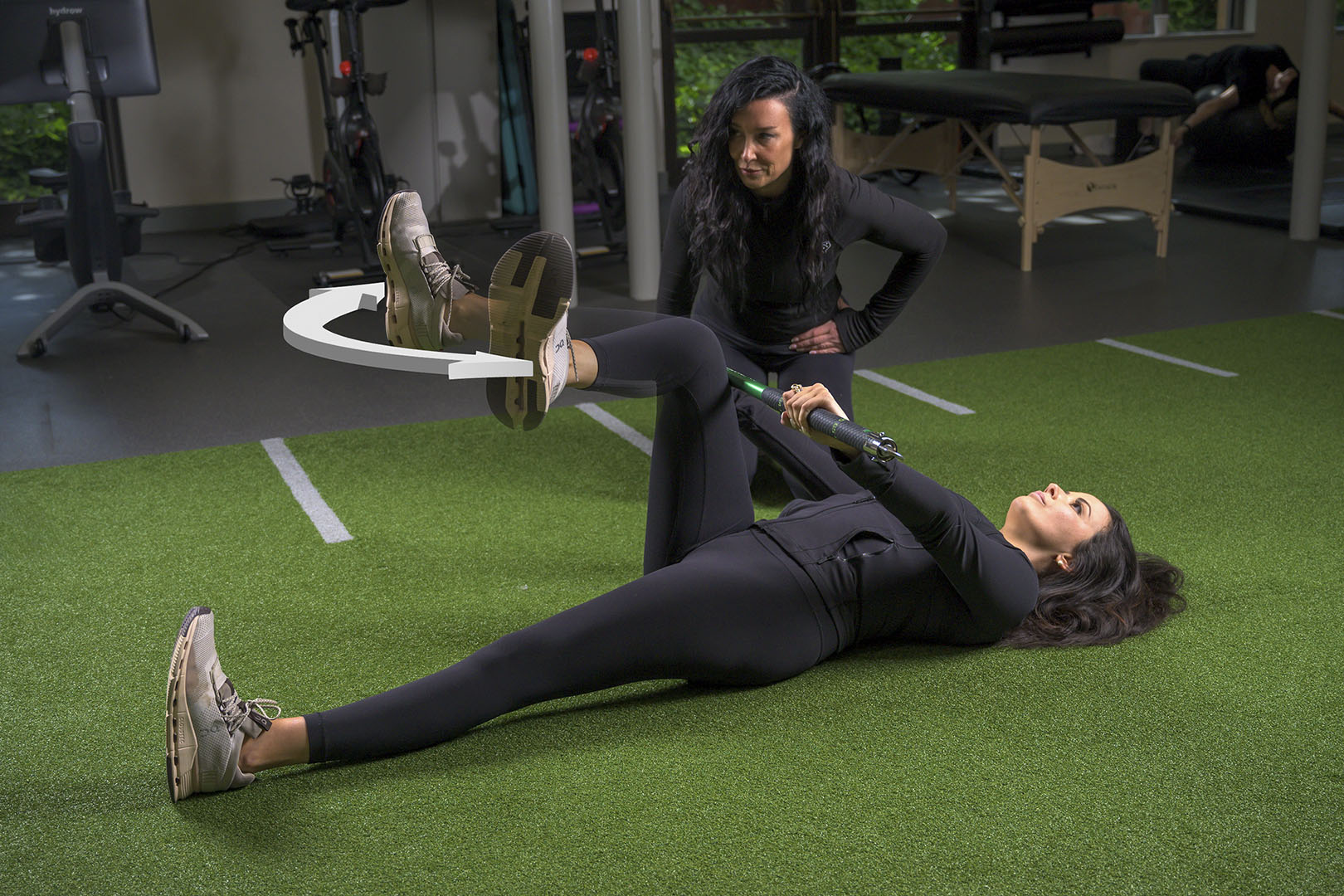
90/90 with Isometric Press and Rotation – Opens up hips, drives rotational control, and hydrates deep fascial lines
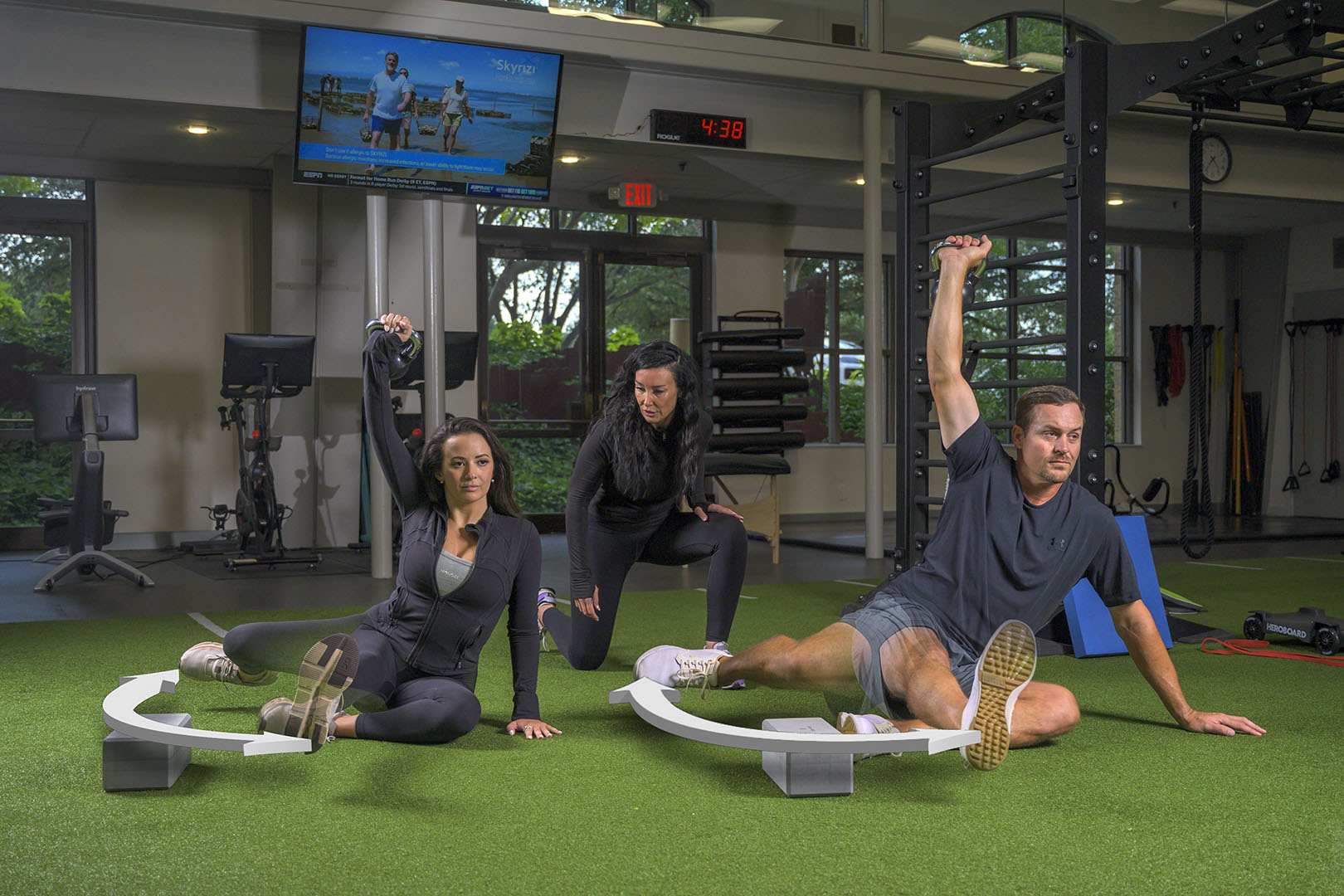
Roman Chair Leg Extension (Single or Double Leg, with or without Internal Rotation) – Builds lower-body strength, lengthens fascia, and reinforces stability through controlled extension
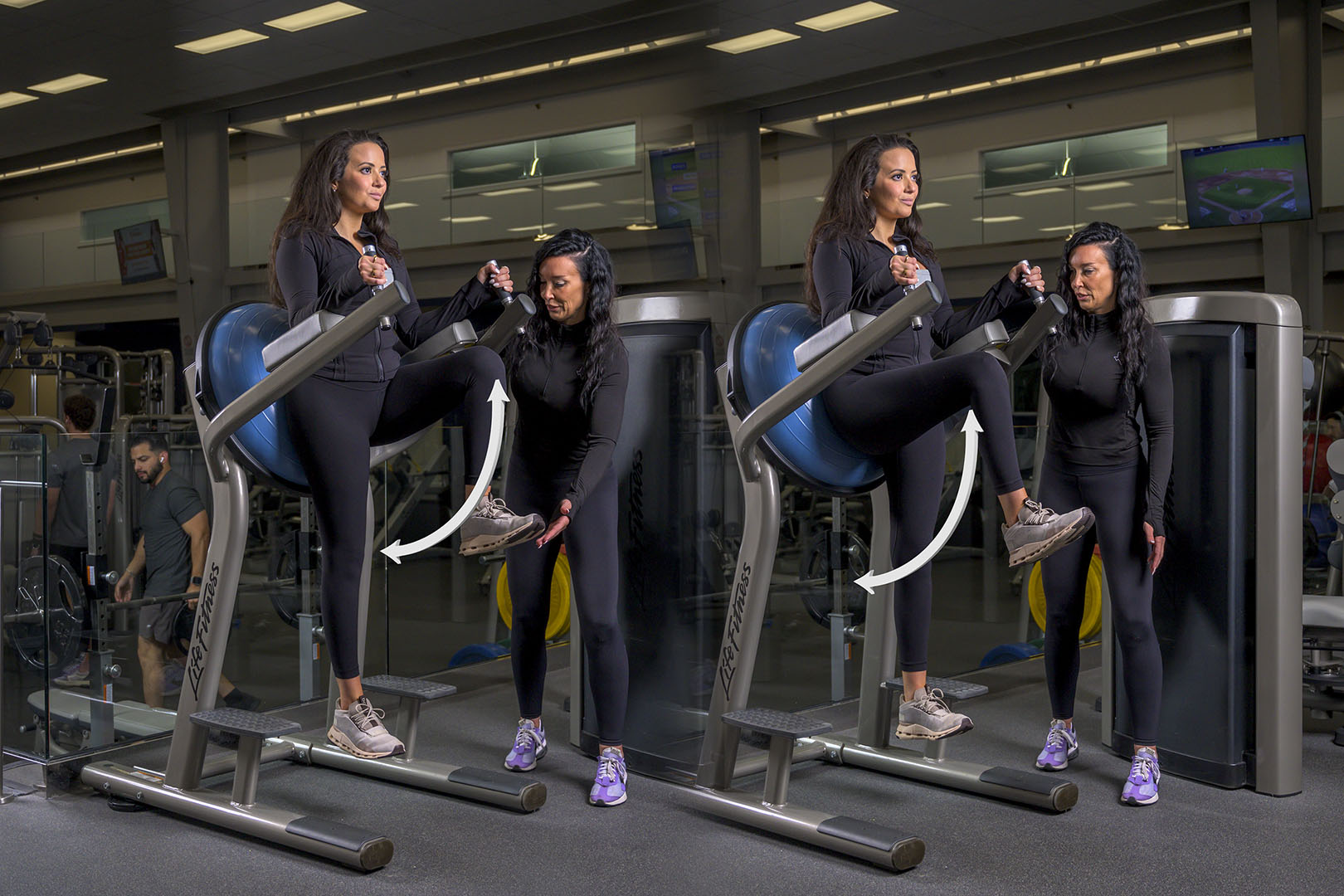
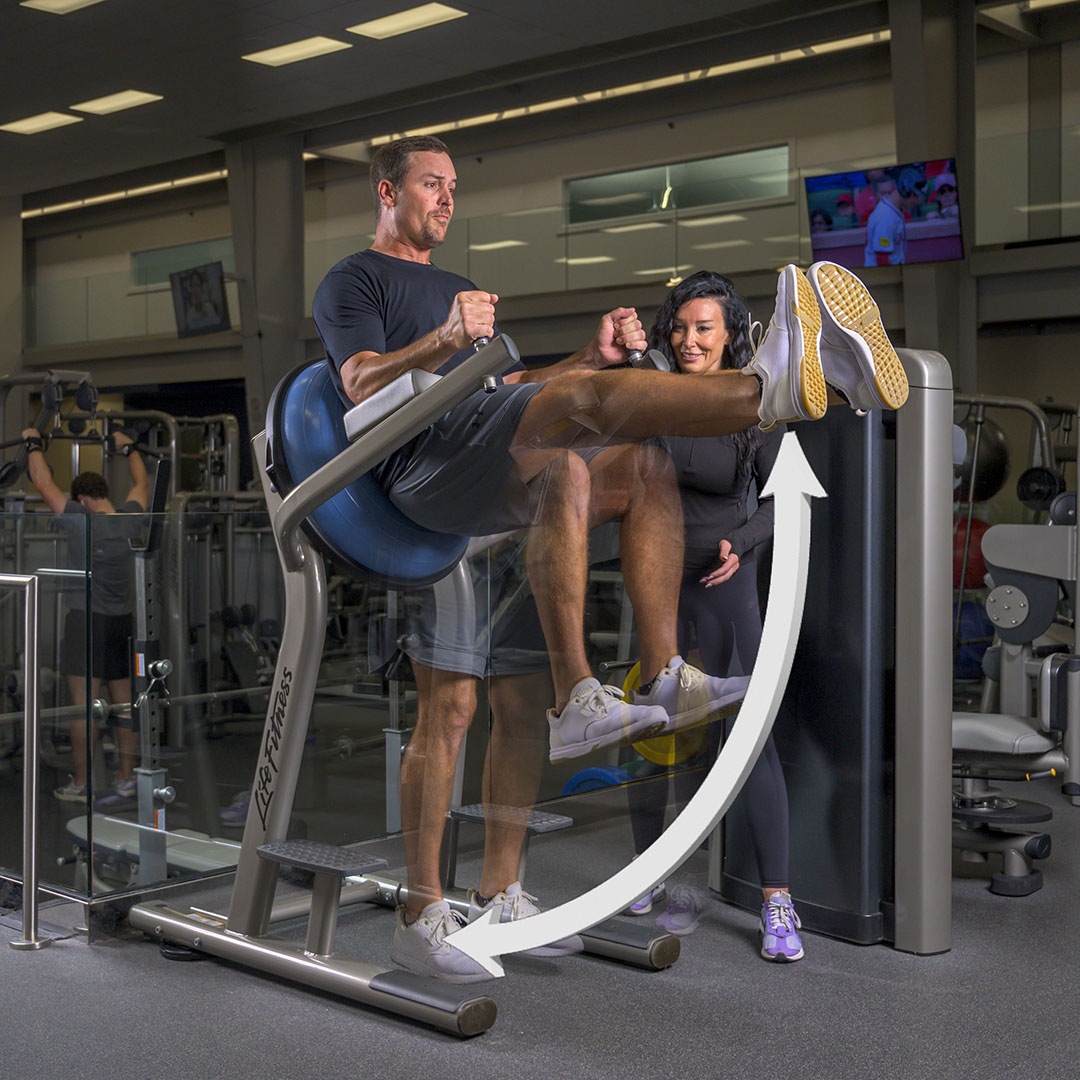
Finish with Static Stretching – Long holds post-round to keep fascia hydrated, supple, and happy
Do these before your round or on off days to stay loose, mobile, and fully hydrated where it matters most – inside your tissues.
Still on the verge of heat stroke? Don’t wait – cool down fast.
We are still dealing with temps over 100, so If you feel like you’re hitting the wall mid-round, don’t try to tough it out. Be smart. Act fast.
Rapid Cooling Hacks
Ice your armpits, groin, neck, and wrists – Pulse points = fastest route to drop core temp short of diving into a cool lake. (Not recommending jumping into the water hazard– but hey, we’ve all considered it.)
Coconut water or pickle juice – Packed with electrolytes. Fun fact: coconut water has been used as a temporary IV fluid in emergencies. If it’s good enough for that, it’s good enough for your hydration plan. (Pro tip: semi-frozen coconut water? Chef’s kiss.)
Soaked cold towel around the neck – Keep a few in the cart cooler so they’re icy and ready. Drape it around your neck between shots for instant relief.
Fan + mist combo – Not just for pro tour players anymore. The airflow helps sweat evaporate, which is the key to actually cooling your body – not just feeling wet and miserable.
Grab the shade – When the pace of play slows, don’t just bake in the sun. Post up under a tree or in the cart canopy while you wait. Your body will thank you.
Don’t be a hero – No round of golf is worth a trip to the ER. If you’re feeling symptoms of heat stroke – high body temp, hot/dry skin, rapid pulse, pounding headache, dizziness, nausea, confusion – or if your playing partner is clearly struggling, call it. Heat stroke is a medical emergency. Get help immediately.
Don’t just drink water, absorb it. Eat your hydration. Move with intention. Respect your fascia.
Crush drives. Stay cool. Don’t pass out. You’ve got this.
Mara Marek is an Elite Strength and Conditioning Coach, NASM Master Trainer, Corrective exercise Specialist, Golf Fitness Specialist, Golf Forever Coach and Ambassador, Pre/Post Natal, Clinical Specialist at The Nelson Golf & Sports Club in Las Colinas.